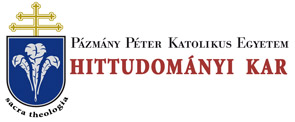Folia Theologica et Canonica 10. 32/24 (2021)
Ius canonicum
EXEGESIS ON MOW PROPRIO SUMMORUM PONTIFICUM BY BENEDICT XVI 121 This is how, in the immediate post-conciliar period, such a route was taken, at the same time so strongly normativist or positivist as lacking in theological reflection; the effect of which was in fact to gradually restrict the freedom of celebrating Holy Mass with the typical edition of the Roman Missal of 1962. Worse still, the devotion of those so-called lovers of the aforementioned typical edition tends to be seen as a belligerent resistance to the changes supposedly desired by the Conciliar Assembly. And all this, curiously enough, at a time when arbitrary experiments, which violated the newly approved liturgical regulations, happened to be frequent. Throughout this time of liturgical chaos, a considerable number of clergy and religious were instructed and/or de-instructed, and the negative consequences of all the turmoil still persist to this day. A first definite result of the above-mentioned issue were the two notifications, which came after the referred instruction of 1969, published by the Sacred Congregation for Divine Worship: a general one in 1971, and a more specific one in 1974.7 8 The intention of these communications was to restrict the “authorisations” given for the celebration of Holy Mass with the earlier liturgical books, as from then on permission for such could only be granted by the rightful Ordinary, and only for elderly priests, or who were sick. II. Immediate precedents to the Motu Proprio Summorum Pontificum Those were the last “regulations” that were approved during St. Paul Vi’s papacy. But those criteria survived formally for fifteen years, and they even continued to be applied for six years more, into the papacy of St. John Paul II. Later clarifications or reforms on the subject, better thought out and even more well-intentioned, gradually converged on the theological nucleus inherent in them, and as a result, began to open up the way for freer, and more diverse routes, as corresponds to the ancient canonical tradition. A first step was the letter Quattuor abhinc annos, which the Congregation for Divine Worship sent to the Presidents of the Episcopal Conferences on October 3rd 1984, which in some way had already been anticipated in St. John Paul II’s Apostolic Letter Dorn inicce Cence of 1980 on the Mystery and Worship of the Eucharist. According to its third paragraph, that circular letter dealt with “the problem of those priests and faithful still holding to the so-called Tridentine Rite”} In this, for the first time since the end of the Second Vatican 7 Cf. SC. pro Sacramentis et Cultu Divino, Not. De Missali Romano, Liturgia Horarum et Calendario (14 iun. 1971): AAS 63 (1971) 712-715; and SC pro Sacramentis et Cultu Divino, Not. Conferentiarum Episcopalium (28 oct. 1974): Notitice 10 (1974) 353. 8 Cf. SC. pro Sacramentis et Cultu Divino, Ep. Quattuor abhinc annos (3 oct. 1984): AAS 76 (1984) 1088-1089.
